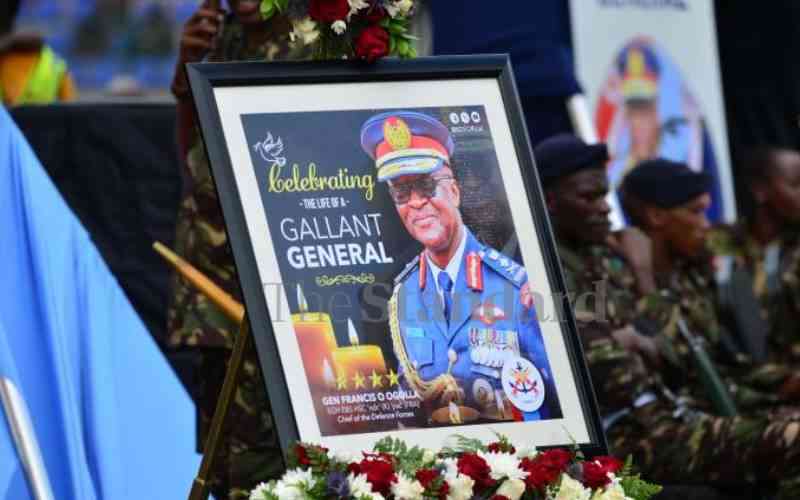By Biketi Kikechi
Kenya: The identity of ghost workers siphoning Sh180 million from government will remain unknown until an audit by the Ministry of Devolution and Planning is completed.
That is despite the fact that civil servants are today paid through the advanced integrated finance management electronic system.
Devolution Cabinet Secretary Ann Waiguru has, however, assured Kenyans that they are about to catch-up with ghost workers in the public service. Ms Waiguru said the ghost workers are as a result of people drawing salaries for public servants who left service long ago.
She expressed confidence that once complete, the audit would reveal the true number of ghost workers and their names.The ministry does not have the exact figure.
Questions have been asked how ghost workers could exist when personnel officers keep records of all active, retired, suspended, sacked and dead workers from the district to national offices. Are the ghost workers accidental or are they a designed scheme by a few crooked government officers to pocket Sh180 million monthly?
Chairperson of the Public Service Commission Margaret Kobia should know how many ghost workers are on the pay roll but our written inquiries to her were not responded to. The following are answers given by CS Waiguru:
The Standard on Sunday: Is it possible to have ghost workers without knowledge of PSC, HR officers and accountants?
Waiguru: The ghost workers referred to in the audit exercise are unique. These are employees whose appointment were authorised but who at the time of exit became ghost workers by virtue of their salaries not being stopped as and when they either proceeded on secondment, retired, resigned, passed away or requested for unpaid leave.
Public Service Commission would ideally not be aware as they do not manage the civil service payroll. HR officers are the ones responsible for managing the payroll. The challenge has been that of non-compliance with the existing HR information systems like Integrated Payroll and Personnel Database (IPPD) which requires that once an employee exits, he or she is detached from the system and deleted from the complement.
How many are they? Are their names on the pay roll? Do the ghost workers have personal numbers? If not, how are they paid?
Waiguru: The total number will be clear once the audit is concluded. Their names have been on the payroll until they were exposed through the HR Audit exercise after which their salaries were stopped and action to recover overpaid monies commenced. The ghost workers are identified by name, personal numbers, designations, work stations and their respective ministries
How is the money paid – through banks or through vouchers?
Waiguru: Through bank accounts. Payment by voucher is not allowed. (An officer later told The Standard on Sunday that money is sometimes wired to outposts around the country where civil servants are paid by district officers or chiefs and that could also lead to the existence of ghost workers).
Are they really ghost workers or is it a well networked plot by a few accountants and finance officers who pay themselves the money?
Stay informed. Subscribe to our newsletter
Waiguru: Accountants and finance officers are not involved in payroll preparation, they only interact with the payroll at the point of paying.
Media reports indicate many accountants have been transferred to other stations by the government. Are they still going to handle pay rolls? Were they responsible for the ghost workers on payroll?
Waiguru: Accountants only interact with the payroll at the point of making payments hence they are not responsible for creation of ghost workers. An ongoing audit of the 47 counties had earlier revealed that the national government was paying salaries to thousands of workers who had been fired, and in some cases, who died years ago.
“Since July last year, counties have been performing a head count to weed out the “ghost workers”, to trim the wage bills and improve service delivery,” said Council of Governors Chairman Isaac Ruto.
“What is shocking is that a month after the exercise began, more than 10,000 non-existent workers have been identified.”
 The Standard Group Plc is a
multi-media organization with investments in media platforms spanning newspaper
print operations, television, radio broadcasting, digital and online services. The
Standard Group is recognized as a leading multi-media house in Kenya with a key
influence in matters of national and international interest.
The Standard Group Plc is a
multi-media organization with investments in media platforms spanning newspaper
print operations, television, radio broadcasting, digital and online services. The
Standard Group is recognized as a leading multi-media house in Kenya with a key
influence in matters of national and international interest.
 The Standard Group Plc is a
multi-media organization with investments in media platforms spanning newspaper
print operations, television, radio broadcasting, digital and online services. The
Standard Group is recognized as a leading multi-media house in Kenya with a key
influence in matters of national and international interest.
The Standard Group Plc is a
multi-media organization with investments in media platforms spanning newspaper
print operations, television, radio broadcasting, digital and online services. The
Standard Group is recognized as a leading multi-media house in Kenya with a key
influence in matters of national and international interest.








